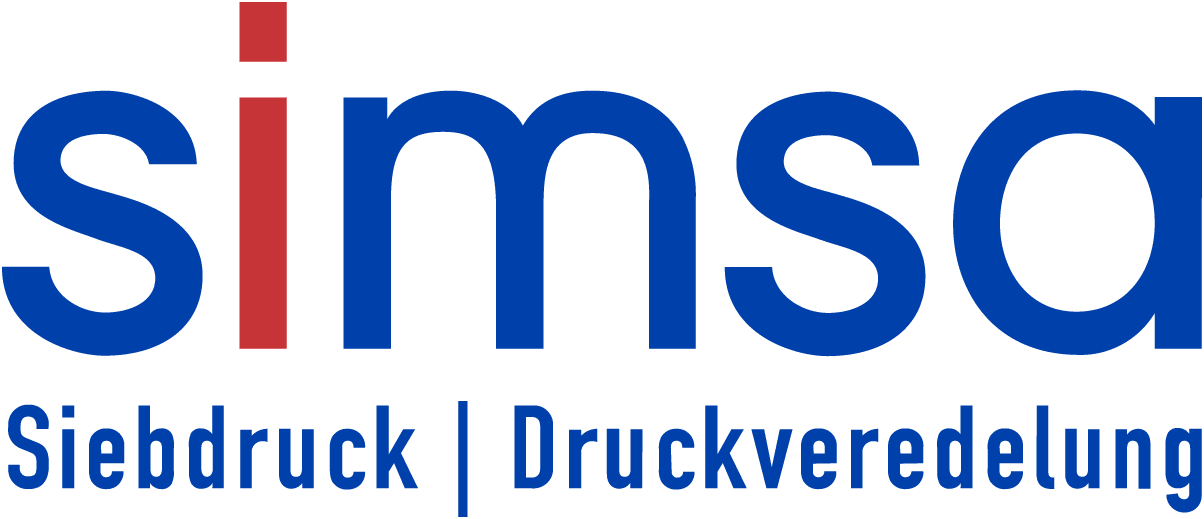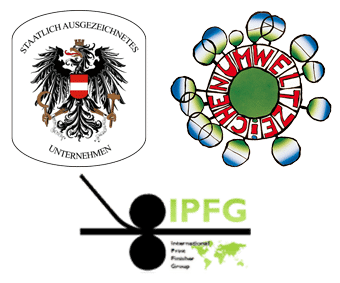Our company history
1972
On July 1, 1972, Karl Simsa obtains his trade license and, after almost 20 years of experience in the printing industry, sets up his own business. The first “production site” is the family dining table in the kitchen of the private apartment in the Hanson estate in Vienna’s 10th district. They start with just one customer, with manual screen printing on plastic plug-in parts
1973
Production moves to a windowless cellar, which triggers short-term plans to start growing mushrooms. There is still no telephone connection. Customers therefore still send postcards asking them to come by to pick up order documents.
1974
The company moves to Himberg in Lower Austria to a house with a garden and table tennis table, which spontaneously leads to the invention of the lunch break. The first employees are hired as table tennis partners. One of the first of them, Mr. Schippany, even remained loyal to the company until his retirement 30 years later.
1977
Now that the house bank is no longer granting any more loans, this year’s investments are limited to a baby and a baby dog, which share the same crib in a companionable and cost-saving way.
1982
The company moves to Katharinengasse in Vienna’s 10th district. Production is increasingly expanded to include fully automated and larger systems, and space requirements increase. In addition to classic screen printing, print finishing of paper and cardboard with high-gloss varnishes and effect inks begins.
1992
Construction of a new building at the current location at Oberlaaerstrasse 226 in Vienna’s 10th district
1996
Acquisition of the first large-format, fully automatic hot foil stamping machine and thus the start of metallization on a larger scale
1999
Entry into digital printing
2002
The baby from 1977 has grown slightly in the meantime, decides to start a career as a bank employee, and takes over the credit liabilities and management in the 2nd generation.
2003
Development of various forms of security printing. Customized hologram effects are produced for the first time. The first anti-counterfeiting features are applied to security printing types such as vouchers and stamps.
2004
Weighing 18 tons, the heaviest purchase to date arrives: a hot foil stamping and die-cutting machine from Swiss manufacturer Bobst in full-sheet format. When the fitter runs the machine at full speed for the first time, one of our long-standing machine operators can only utter an awestruck “Na Prack…”. Our customer base expands to include the packaging printing industry.
2005
Increased lecturing activities at industry events subsequently lead to the first teaching assignments at institutions such as the WIFI Vienna advertising academy, the advanced course for packaging technicians and the BFI Salzburg. Seminars on print finishing are also offered for the first time. These are used both by companies as further training for their employees and by educational institutions such as the HTL for printing technology or the New Design University (FH).
2006
Hall extension and entry into film lamination through the takeover of the Pavlovsky company. As a result, almost all types and techniques of print finishing are finally covered. Simsa thus becomes the supplier with the largest range of finishing products in Austria.
2007
Our name has now also become known beyond national borders: We are invited by the IPFG, the globally active “International Print Finisher Group”, to take the entrance exam. After extensive hearings and tests, we were accepted into their blood brotherhood (OK, admittedly, maybe it wasn’t blood but Cabernet Sauvignon. But what counts is that our customers can now rely on the problem-solving expertise of a network with members on 5 continents).
2014
Simsa wins the Gold Printstar in the “Calendar” category with a project for Porsche Design. The Printstar is the “Oscar” for sensational print products throughout the German-speaking world. The fact that a small, impertinent Austrian won the prize here led to frustrated plant closures and early retirements among German colleagues after the award ceremony in Stuttgart. So, by all accounts… 😉
2015
Further extension to increase the production area. Storage capacity for major customers with call-off storage for branches is increased.
2016
Major investments in the field of digital printing and digitally controlled finishing. With a fabulous 4.5m length for a printed panel, we are pushing the previous format limits in color printing to the limit. The printable material thicknesses are also extended to a maximum of 50 mm. In addition to computer-controlled cutting, milling and oscillating cutting are added to the cutting technology after 20 years.
2020
After years of purchasing green electricity from Austrian sources, the company now has its own photovoltaic system on the roof. Most of the electricity we generate ourselves is also consumed by us, which improves the eco-balance of our products.
2021
Simsa invests in another foil stamping machine, this time specializing in the application of single image holograms. This means that a high-end area of security printing is now also covered, which is usually only mastered by banknote printers and a very small handful of luxury packaging manufacturers throughout Europe.
2022
Simsa celebrates half a century of company history!
2023
For us, the saying “If you say A, you must also say B” means “If you say A, you must also be able to spell Z”: To round off our portfolio in hot foil stamping, we are adding another system with which we can apply real metal lettering to finished objects, from finished carrier bags, promotional items and leather goods to thick wooden staves or wooden boards.
Simsa wins the Golden Pixel Award, the prestigious prize for outstanding print products, for the third time in the company’s history.
2024
Simsa takes over the composite materials division from Polehnia. The new production systems in the laminating sector enable customized composite materials to be produced from individual layers of paper, cardboard, paperboard, coating materials or films. And this up to a format of 75x105cm, from 0.4 to 12mm thick and in 2, 3 or more layers (and no, even if the latter sounds like it, we conjure up a variety of new materials, but still no toilet paper)

